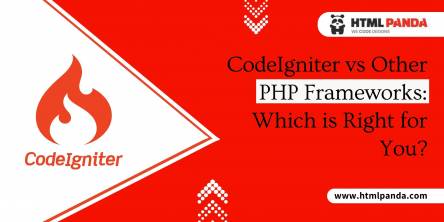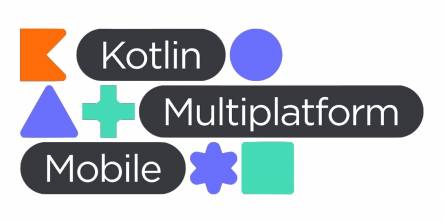Azure Cost Optimization - Best Practices For Effective Resource Management

The cloud provides a lot of advantages to its users, but unmanaged cloud costs and spending can escalate very quickly. The purpose of using cost optimization practices is to maximize the cloud capability while reducing non-essential expenditures. A proactive and consistent approach to cloud cost optimization enables organizations to reduce cloud spending without having to compromise on performance and reliability. While cost optimization allows organizations to find ways that can help them reduce cloud costs, the best practices also enable them to look at services that can be exchanged and prioritized to achieve resource and cost optimization.
In this article, we will look at some of the best practices that can be followed for Azure cloud cost optimization.
Best Practices And Strategies For Azure Cloud Cost Optimization
- Leveraging the Cost Management Tools of Azure: While cloud cost management is a complex task, Azure’s cost management tools can address this challenge. These tools are a suite of Microsoft services that are designed to provide an easy and transparent way to monitor and control cloud costs effectively. The suite includes tools such as Azure Cost Management and Billing that provide cost analysis and advanced analytics that allow companies to track resource usage, while Azure Advisor offers recommendations for cost optimization by removing idle resources, rightsizing resources, and offering optimization through reservations. Microsoft Power BI connectors and Cost Management APIs allow customization and enable organizations to create personalized dashboards and reports. An AI-powered feature in Power BI, allows companies to view cost details that include forecasting, key insights, and reports. These tools allow users to analyze data for effective cloud cost optimization.
- Shifting Workloads to Containers: Moving applications to containers from VMs can help in cloud cost optimization. Containers offer more efficiency in resource utilization than VMs, since containers have a lower memory usage and provisions faster. This allows data centers to use existing hardware to handle more workloads. Since containers don’t contain operating systems they require lower computing power and memory, which leads to more efficient usage of resources and a decrease in infrastructure costs. Containers are also more secure as they are cut off from the host machine.
- Bandwidth Pricing: Data transfer fees can be optimized by limiting the data transfer endpoints, and this can be achieved by minimizing the number of public IPs in an architecture. Cost optimization can also be achieved by grouping systems that transfer huge volumes of data between them and transferring them to the same cloud provider. By evaluating the data transfer fees charged by a cloud provider, companies can adjust their architecture to minimize data transfers. As an example, by relocating on-premises applications that access cloud-based data frequently, frequent hops or data transfer between on-premises and the cloud can be avoided, resulting in cost optimization and lower costs. Data transfers from Azure services to Azure CDN do not attract charges, which makes Azure CDN a great option for applications that have higher data transfer requirements.
- Identifying Hidden Costs in Azure: Hidden or unidentified costs can impact cloud spending in a big way. These hidden costs can be data transfer costs such as outbound data transfers, which can add up if they are not closely monitored. Other costs such as premium services, reserved instances that are left idle or not closed, underutilization of resources are all hidden costs. There are other hidden costs that are associated with cloud infrastructure management and support, such as training costs, operational overheads that can be looked at when optimizing Azure cloud costs. By using Azure Cost Management tools to review and audit Azure costs can go a long way in identifying such hidden costs. Identification of such hidden costs can help organizations ensure that they make more efficient use of cloud resources and optimize their Azure cloud costs.
- Using Serverless Computing: Serverless computing allows organizations to focus on functionality of their applications by paying only for the computing resources that are used or consumed. Azure Functions, a part of Azure tools, allows developers to write code that responds to events and scales the code automatically, making it a cost-effective solution that can respond to varying workloads. Another tool, Azure Logic Apps allows automation of business processes and workflows without managing servers. Leveraging serverless computing is one of the best practices that can optimize Azure cloud costs.
- Tagging Azure Resources: Tagging resources can be very useful for identifying, managing, and optimizing cloud costs and provide a flexible way to categorize and manage resources. Tags enable tracking resources and enable organizations to understand the cloud spending in detail. As an example, tagging resources based on various departments, projects, or any other relevant criteria can make it easier for organizations to allocate costs and also identify areas that can be optimized for costs. Tags can also help track active resources and detect workloads that can be deactivated for cost optimization. Azure Policy allows organizations to enforce tags and helps ensure that all resources are tagged for cost management. Tags enable better visibility into the cloud usage to optimize Azure cloud costs.
- Leveraging Storage Tiers or Layers: Azure Blob Storage offers various tiers such as Hot, Cool, and Archive with distinct cost structures priced at gigabytes per month. Users can also choose to use lower redundancy levels that can reduce storage costs. The Hot tier can be used for storing data that is frequently accessed, offering high storage costs and low access costs. The Cool tier on the other hand offers low storage costs and high access costs and can be used for data that is not accessed frequently and is stored for at least 30 days. The Archive tier, as the name indicates, offers the lowest storage cost and is generally used for data that is stored for at least 180 days and accessed rarely. It also has the highest cost for data retrieval. Organizations can optimize their cloud costs by understanding data access needs.
Final Words
Organizations must leverage best practices such as serverless computing, tagging Azure resources, and more to identify the hidden costs to achieve Azure cloud cost optimization. However the complex nature of cloud cost optimization makes availing consulting for Azure services invaluable for organizations. These Azure consultants can offer expertise in cloud cost management and best practices to enable organizations to achieve Azure cost optimization.
Similar Articles
In today's technologically advanced landscape, understanding heat distribution is critical for enhancing efficiency and safety across various sectors. Infrared thermography, a pivotal imaging technique, has revolutionized how professionals view and analyze thermal performance.
In this digital age, there are many options available for marketing, but the one that stands out as one that can transform the marketing realm is programmatic connected TV (CTV). The programmatic CTV approach for advertising shows the changing trend in how brands would like to connect with their audience.
PHP has a dominant market position, with over 79% of websites powered to some degree. Developers majorly utilize organized and leveled PHP basic functions, known as PHP frameworks, to create flexible output.
The nonstop hum of machines around us, from the humongous industrial complexes to the processors within the gadgets, shapes our everyday lives. These mechanical advancements have become essential, driving everything from fundamental necessities to our vehicles, airplanes, and so forth.
New methods of managing a Pilate business are transforming the way studios operate. It simplifies routine tasks and helps fitness businesses to grow and facilitate their customers in various ways.
Discover if the S23 Ultra case is compatible with the S24 Ultra. Get insights on fit, protection, and functionality in this comparison.
In the era of astoundingly quick technological progress, organizations are increasingly feeling the need to adjust to the evolving market demands and their requirements by embracing digital transformation
With the rise of mobile devices and the ever-growing demand for cross-platform solutions, businesses are constantly seeking efficient ways to develop applications that can be used on multiple platforms. This is where Kotlin Multi Platform comes into play. Kotlin Multi-platform is a versatile technology that allows developers to write code once and deploy it on various platforms such as Android, iOS, and web.
Discover reliable network cabling solutions ensuring seamless connectivity for remote work. Enhance productivity with consistent connections anywhere.









